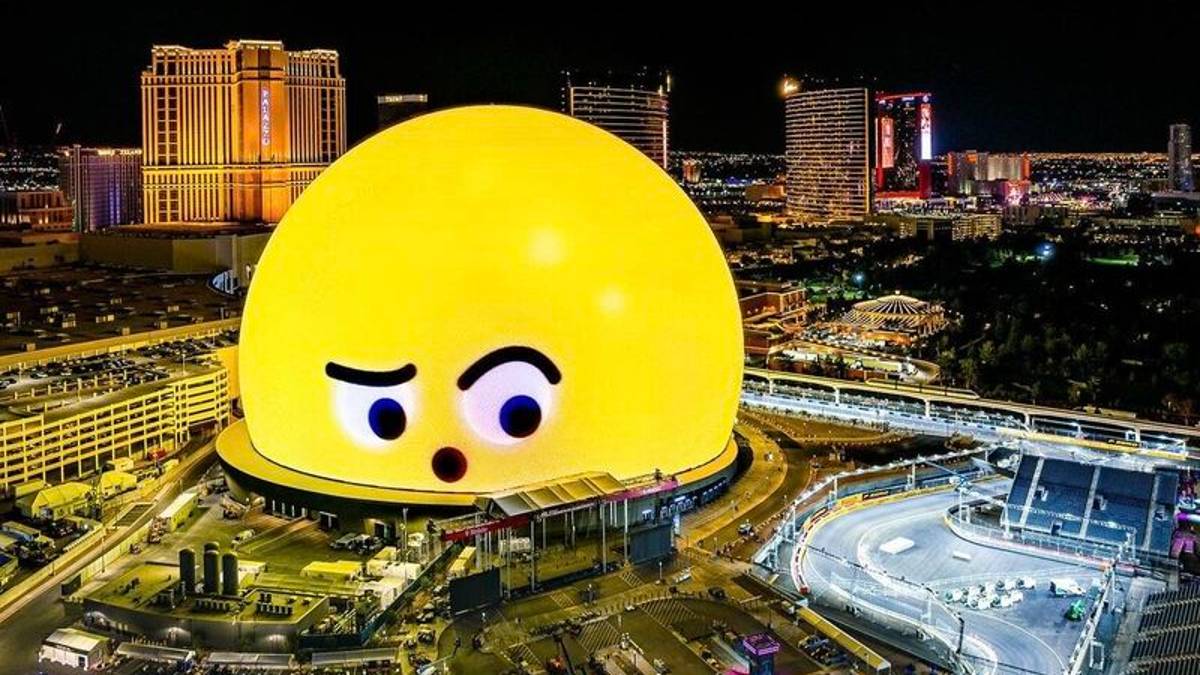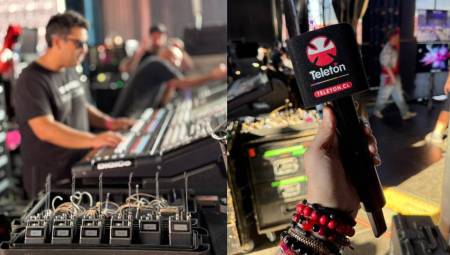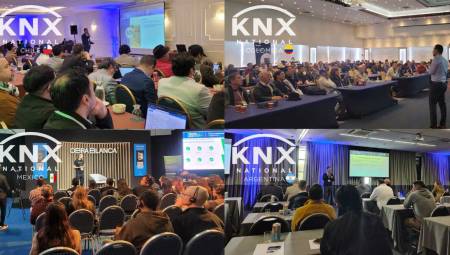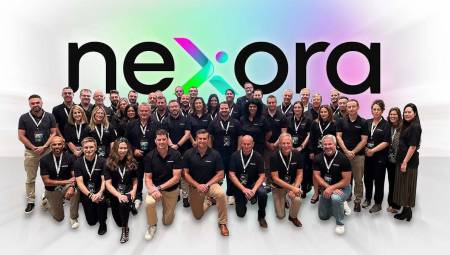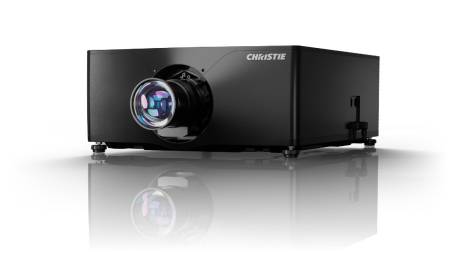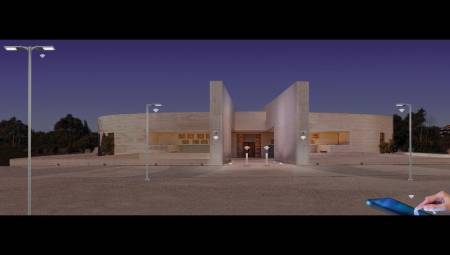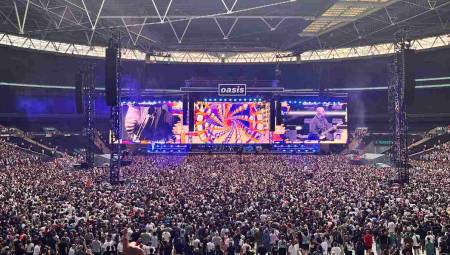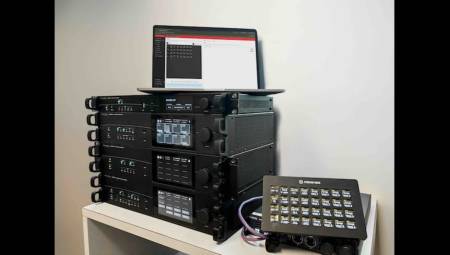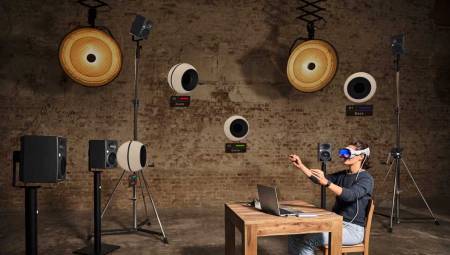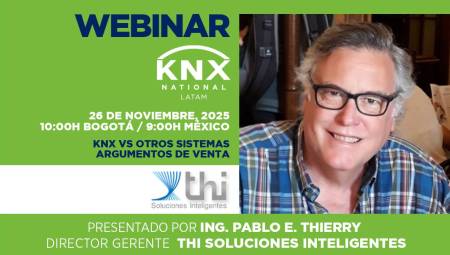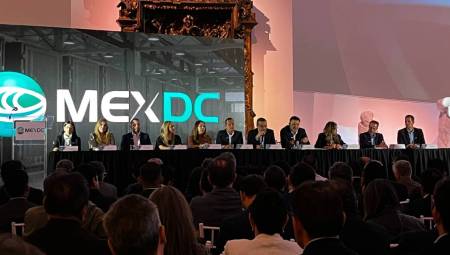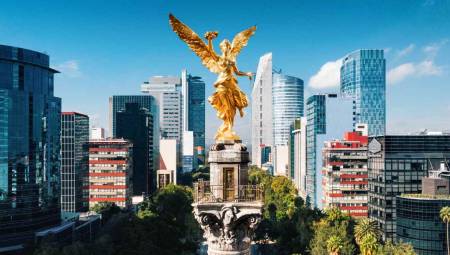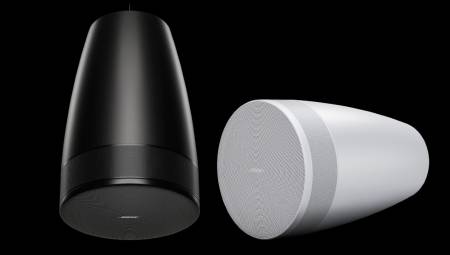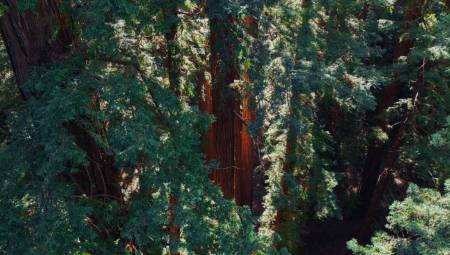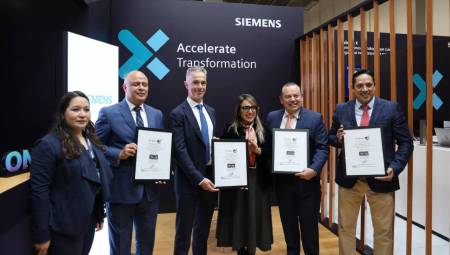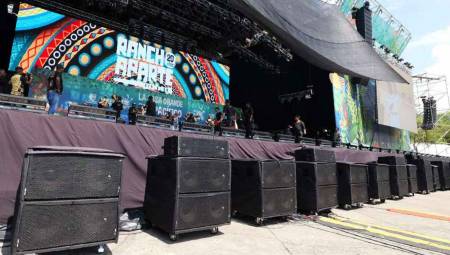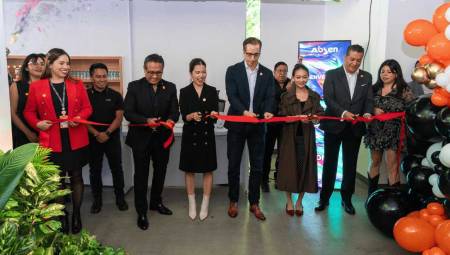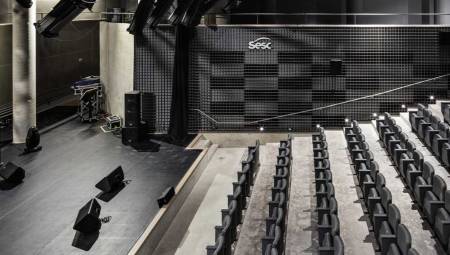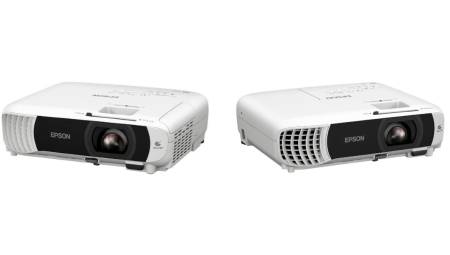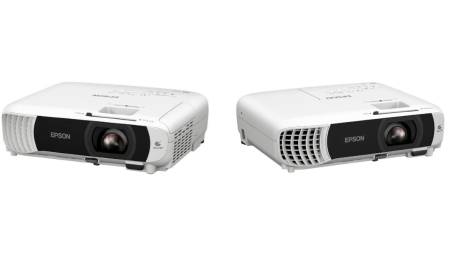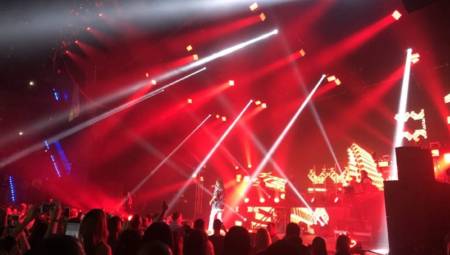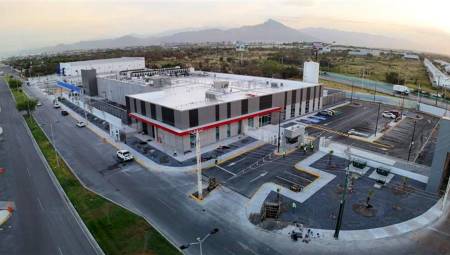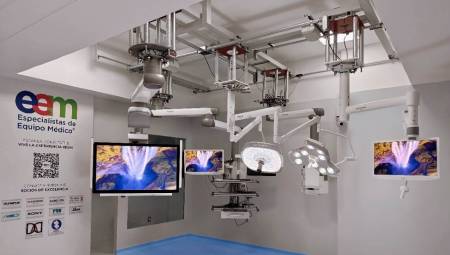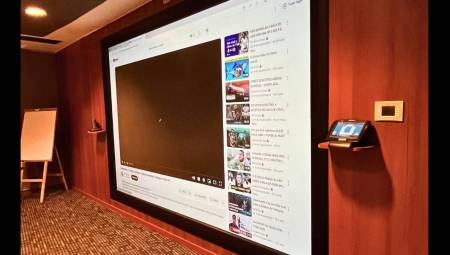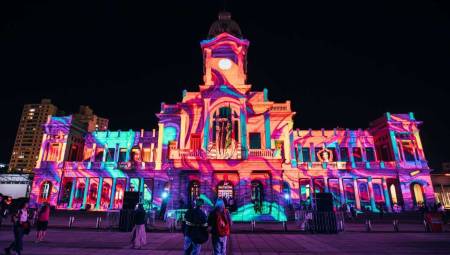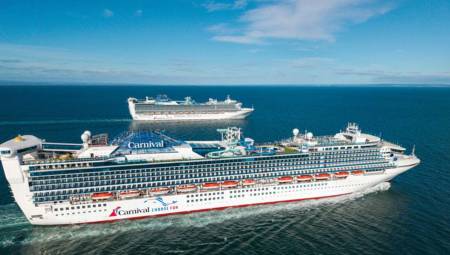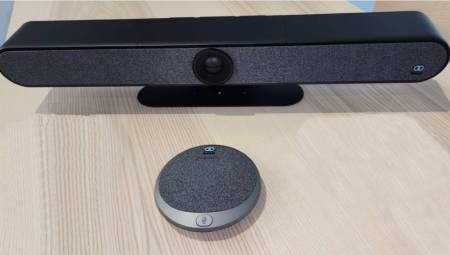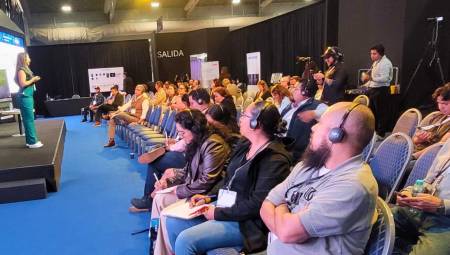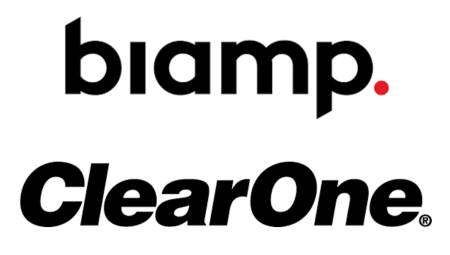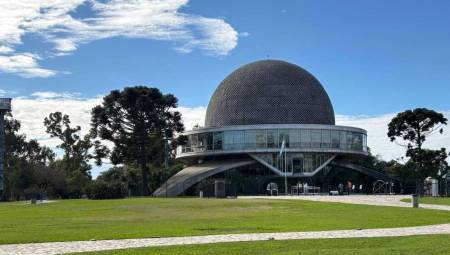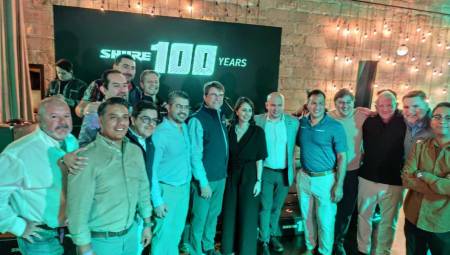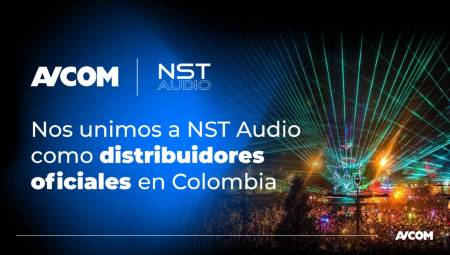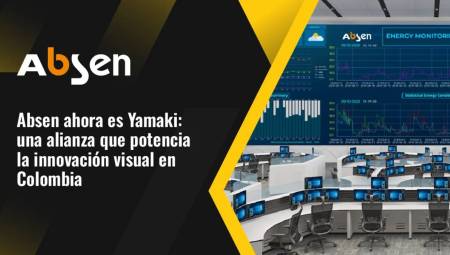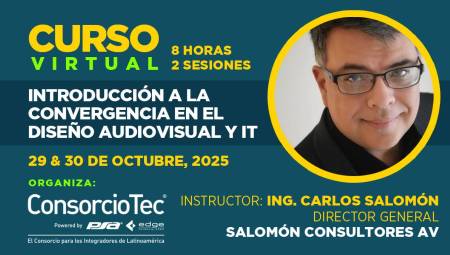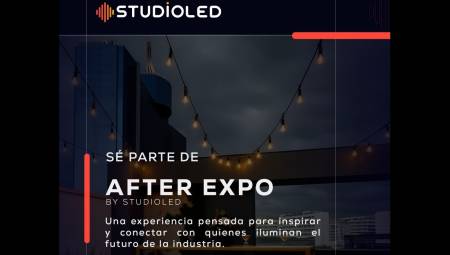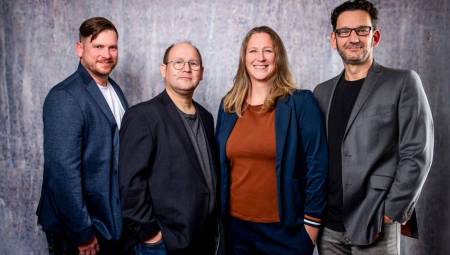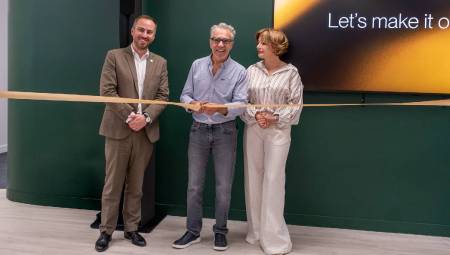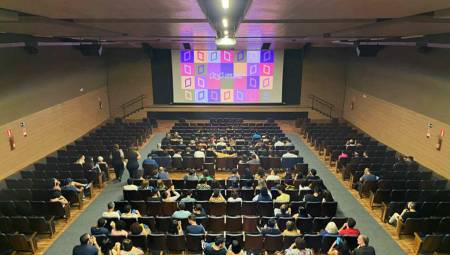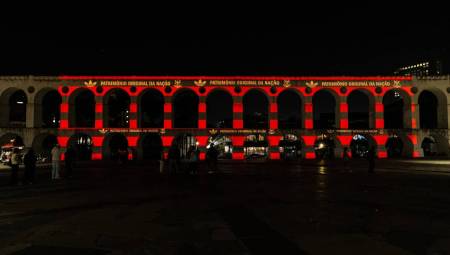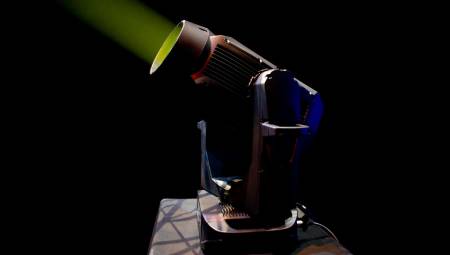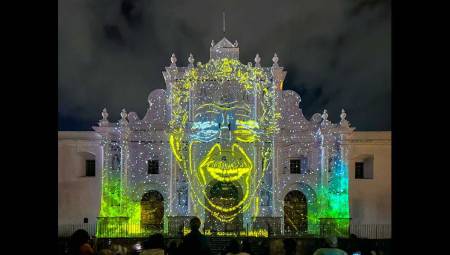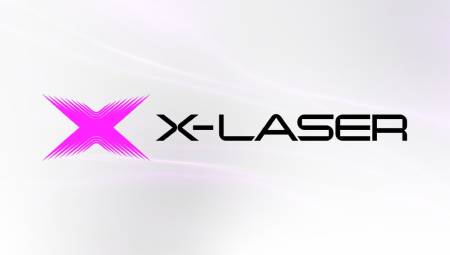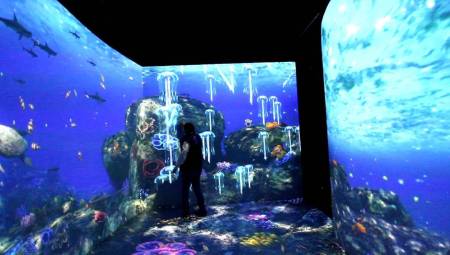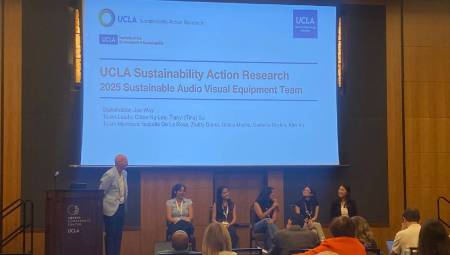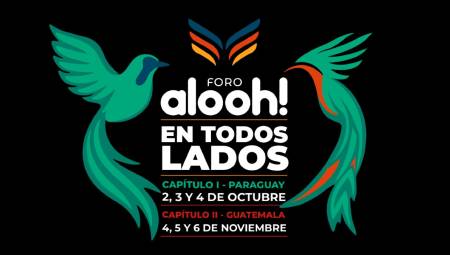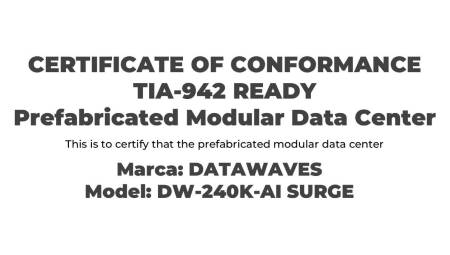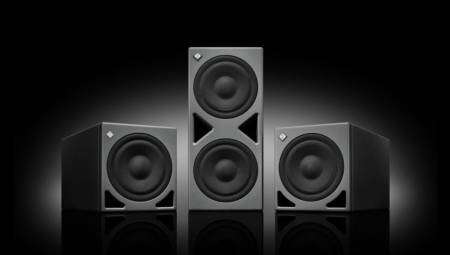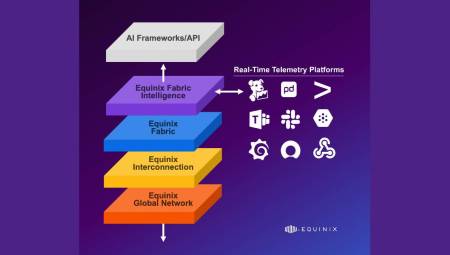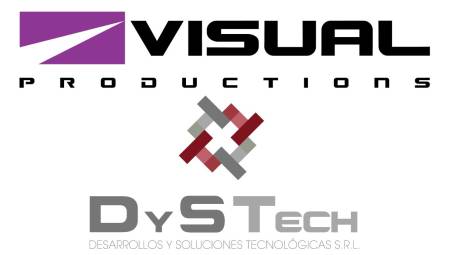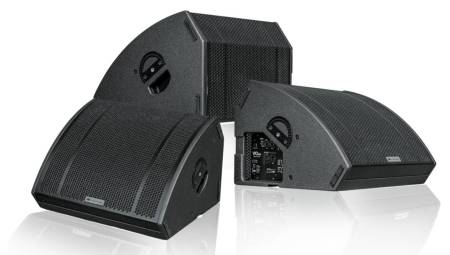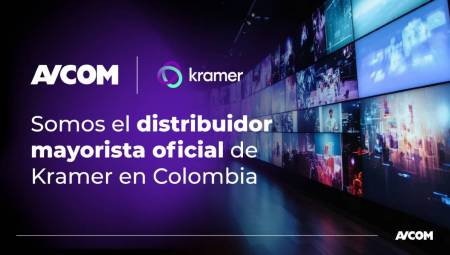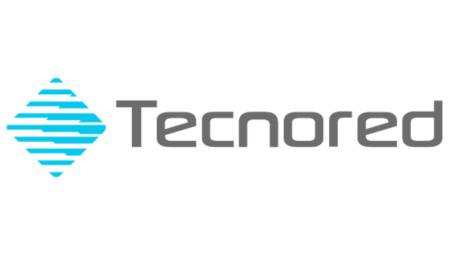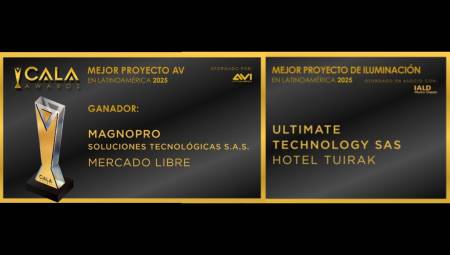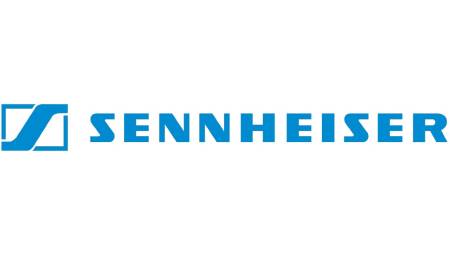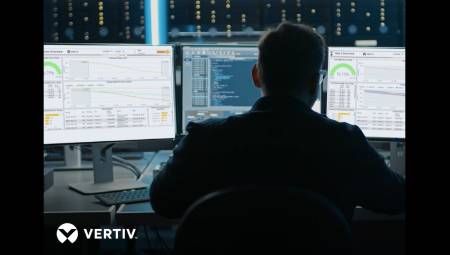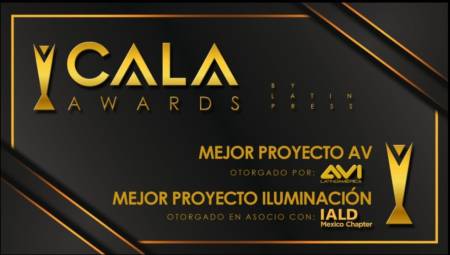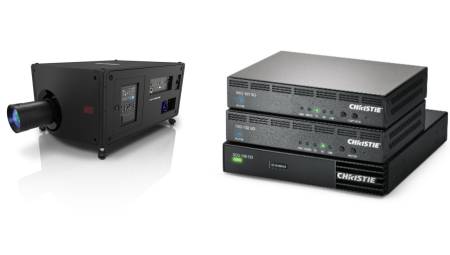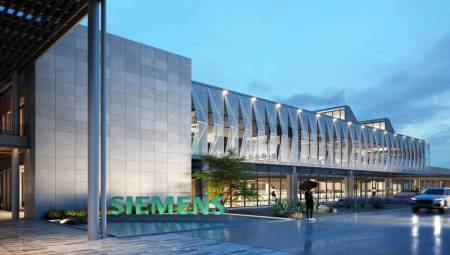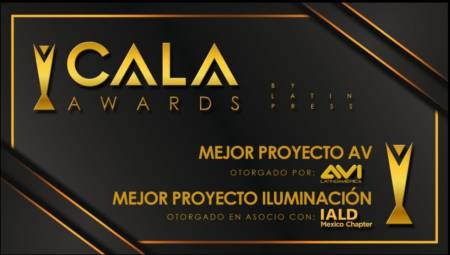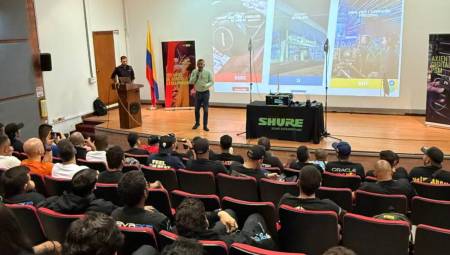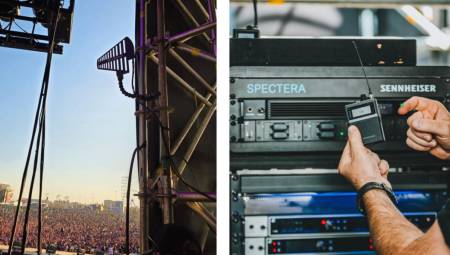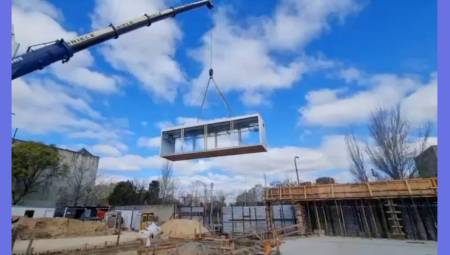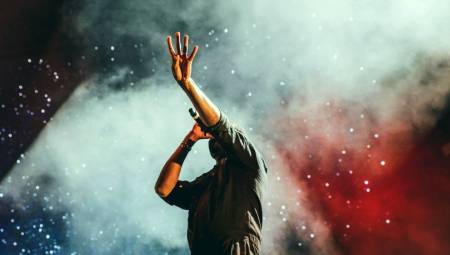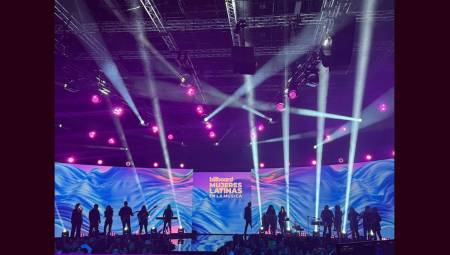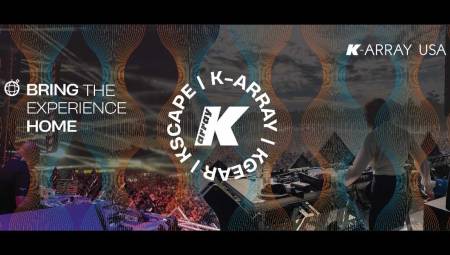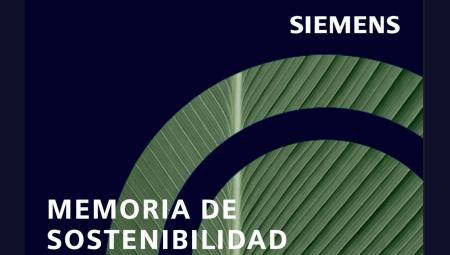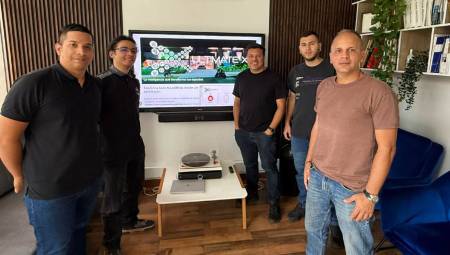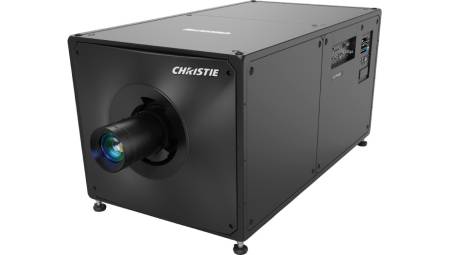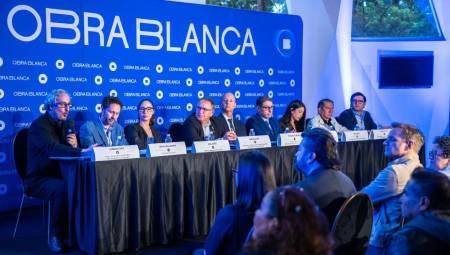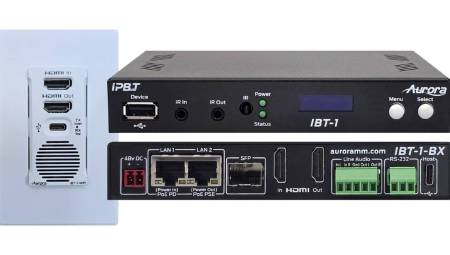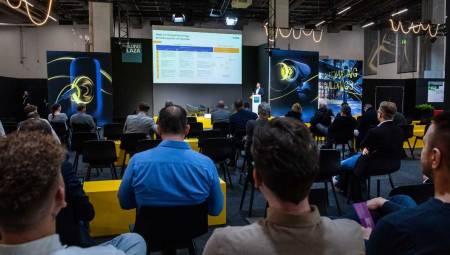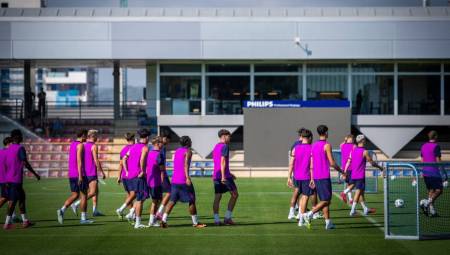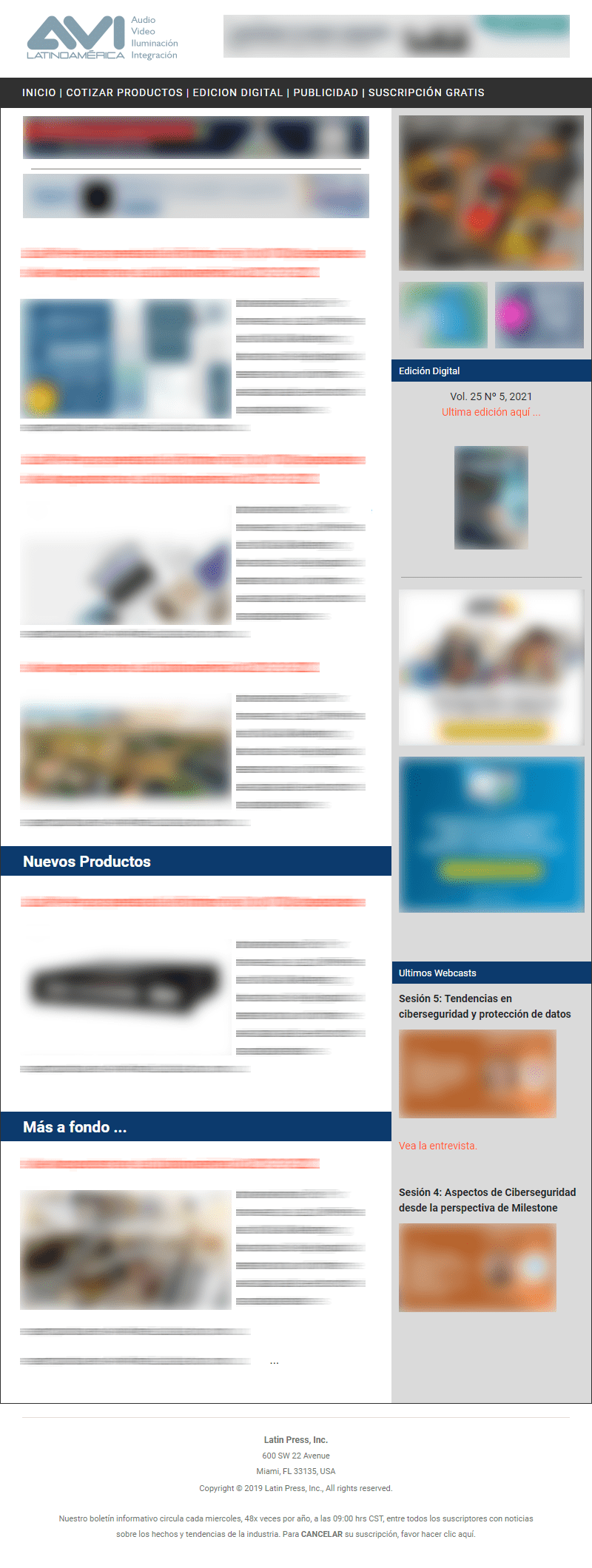The 580,000-foot LED sphere was lit in Las Vegas for the first time in 2023. The new event center features a wide deployment of AV technology with unique technologies.
Richard Santa
On July 4, the United States celebrates its Independence Day, a special date that is commemorated throughout the country. And that was precisely the date chosen to officially turn on Sphere, the new Las Vegas event center, a building with a wide range of audiovisual technology both inside and outside.
Its exterior is covered by a 580,000-square-foot sphere-shaped LED screen, making it the largest LED screen in the world. It consists of approximately 1.2 million LED discs, spaced eight inches apart. Each disc contains 48 individual LED diodes, each of which is capable of displaying 256 million different colors. Inside, attendees are covered by another 160,000-square-foot LED screen.
The opening show began with a welcome, "Hello World," and was followed by dazzling fireworks and animations of stars and stripes, before moving through a wide range of visual content, from vibrant underwater scenes to vividly textured performances and lunar surfaces. Show the versatility of this unparalleled canvas.
Multidisciplinary development
The Sphere was developed by an interdisciplinary team of creative, production, technology and software experts at Sphere Studios, the immersive content studio dedicated to creating live entertainment experiences exclusively for Sphere. Sphere Studios partnered with Montreal-based SACO Technologies, an industry leader in LED video lighting and media solutions, to design and manufacture Sphere's unique LED display.
The Studios team also worked with 7thSense, a creative technology and software company that specializes in high-profile media-based attractions, to deliver programming on the Sphere using its advanced media server, pixel processing and show control technologies, in the continuation of a decade-long partnership with MSG.
Video Capture
The Sphere team worked closely with semi-sensor manufacturer STMicroelectronics to create the world's largest image sensor for Sphere's Big Sky camera system. Big Sky is the ultra-high-resolution camera system used to capture content for Sphere.
Inside the venue, Sphere features the world's largest high-resolution LED display that envelops, covers, and surrounds the audience to create a fully immersive visual environment. To capture content for this 160,000-square-foot, 16K x 16K screen, the Big Sky camera system was designed by the team at Sphere Studios.
In collaboration with Sphere Studios, ST manufactured a first-of-its-kind 18K sensor capable of capturing images at the scale and fidelity required for the Sphere display. Big Sky's sensor, now the world's largest commercial-grade cinema camera sensor, works with the world's sharpest cinematic lenses to capture detailed, large-format images in a way never before possible.
Big Sky's 316-megapixel sensor is nearly 7 times larger and 40 times higher resolution than the full-frame sensors found in high-end commercial cameras. Big Sky also allows filmmakers to capture large-format images from a single camera without having to stitch together content from multiple cameras, avoiding common stitching issues, including close distance limitations and stitching between images. Sphere Studios has filed ten patents and in partnership with Big Sky's technology.
Darren Aronofsky's Postcard from Earth, currently on display at Sphere as part of The Sphere Experience, is the first film production to use Big Sky. Since its debut, Postcard from Earth has transported audiences, taking them on a journey that spans all seven continents and featuring stunning images captured with Big Sky that make them feel like they've traveled to new worlds without getting up from their seats in Las Vegas.
Processing for Displays
Sphere leverages Hitachi Vantara's data processing software to help power the LED displays. Both the Sphere's 160,000-square-foot indoor LED display plane and the 580,000-square-foot fully programmable LED outdoor (Exosphere) use Hitachi Vantara's software as a key tool for streaming immersive, high-resolution content.
With the world's highest-resolution LED display inside the venue and the largest LED screen outside, Sphere leaned on Hitachi Vantara to deliver solutions for streaming video content within unprecedented range.
For his original immersive film, Darren Aronofsky's Postcard from Earth, the system handles more than 400 gigabytes per second of throughput with less than 5 milliseconds of latency and a 12-bit color display with 444 subsampling. Hitachi Vantara used its Hitachi Content Software for File storage platform, a high-performance, software-defined, distributed parallel file system storage solution.
Hitachi's content software for the file system consists of 27 nodes, with 4PB of flash storage for playback within Sphere and real-time streaming to 7thSense media servers, each of which streams 4K video at 60 frames per second, a world first in terms of technology at this scale. Hitachi Vantara's technology enables Sphere to deliver extremely low latency and high throughput, creating an unforgettable experience for audiences during Postcard from Earth.
Hitachi Vantara also partnered with Sphere to produce the same reliable capabilities at Sphere Studios' Big Dome, a 28,000-square-foot, 100-foot-tall custom geodesic dome in Burbank, CA, with a quarter-size screen version at Sphere in Las Vegas. Vegas. Big Dome serves as a dedicated screening, production, and lab hub for the Sphere Studios team to develop original content exclusively for Sphere.
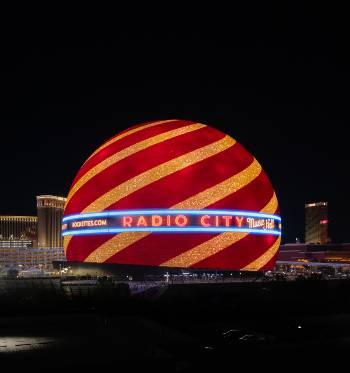 Immersive Audio
Immersive Audio
Although the first thing that stands out about the Sphere in Las Vegas is its outdoor screen, this is just one of the state-of-the-art technologies that make up this event center. Audio also plays a fundamental role.
Sphere Studios partnered with Holoplot, a 3D audio technology company, to create Sphere Immersive Sound, the world's largest fully integrated concert audio system that revolutionizes immersive audio experiences and was installed in Sphere.
Sphere Immersive Sound was developed specifically for Sphere's unique curved interior. The system consists of approximately 1,600 permanently installed mobile HOLOPLOT X1 Matrix Array loudspeaker modules and 300 mobile and includes a total of 167,000 individually amplified loudspeaker drivers.
The system uses Holoplot's next-generation 3D audio beamforming and wavefield synthesis technology to transform the way audio is delivered in large-scale venues. This results in controlled, consistent, and crisp concert audio for audiences of up to 20,000 people, giving each audience member a truly exceptional and personalized listening experience. The entire sound system is completely hidden behind the Sphere's 160,000-square-foot LED screen interior plane.
Any loss of audio transmission is fully compensated for by Holoplot's algorithms in the optimization engine, resulting in clear full-range sound with virtually no coloration and a completely uncluttered visual LED surface, which envelops, over, and around the audience and combines with Sphere Immersive Sound to create a fully immersive environment.
Traditional speaker technology in large-scale venues can result in audio quality that decreases as the distance from the speakers increases, due to the uncontrolled nature of sound wave propagation. Holoplot's patented 3D audio beamforming technology uses intelligent software algorithms to create unique sound waves that are highly controlled and more efficient than conventional speakers, ensuring that levels and quality remain consistent from the point of origin to the destination, even over great distances.
Holoplot's patented beamforming technology can also simultaneously send unique audio content to specific locations on location, creating the possibility for different sections to listen to completely different content, such as languages, music, or sound effects, offering limitless opportunities for truly personalized and immersive audio experiences.
Sphere Immersive Sound will also utilize the unique wavefield synthesis capabilities of Holoplot, a spatial audio playback technique that leverages virtual acoustic environments. With conventional audio technology, the perceived origin of a sound has traditionally been the location of the speaker.
To achieve this sound, manufacturers such as Powersoft participated, which contributed with immersive haptic technology and cutting-edge amplification solutions that are being used in Sphere. Powersoft's technology is integrated into the venue's 10,000 haptic seats and as part of Sphere Immersive Sound powered by Holoplot.
The Sphere Immersive Sound's 167,000 amplification channels are provided by Powersoft's ultra-high-efficiency 16-channel compact amplifier solutions, which are integrated into the venue's Holoplot X1 audio system.
Powersoft provided the patented IPAL (Integrated Powered Adaptive Loudspeaker) technology used in the X1 system subwoofers. An IPAL-equipped system offers unprecedented acoustic performance and complete control of sound system playback, regardless of load and acoustic conditions. To accompany the infrasound haptic system, Powersoft also supplied 2,500 audio channels for the seats, provided by 718 Powersoft Quattrocanali amplifiers.
Aura the Robot
A technology center like Sphere seeks to provide unique experiences at all times to its visitors. That's why it will feature Aura, the world's most advanced humanoid robot, which permanently resides in Sphere's large atrium and acts as the venue's spokesperson, interacting with on-site guests. Five Aura robots greet visitors from the moment they enter Sphere, displaying their lifelike facial expressions and mobility.
The robots are specifically programmed to tell the story of innovation of humanity, including Sphere, helping the audience maximize their Sphere experience. As an integral part of the Sphere Experience, Aura's technical capabilities will continue to advance over time as it learns more about humans through its interactions with guests.
Sphere opened its doors to the public on September 29, 2023 with the first of U2's 25 performances of "U2:UV Achtung Baby Live At Sphere." And the Sphere Experience, Postcard from Earth, directed by Darren Aronofsky, premiered on October 6.



